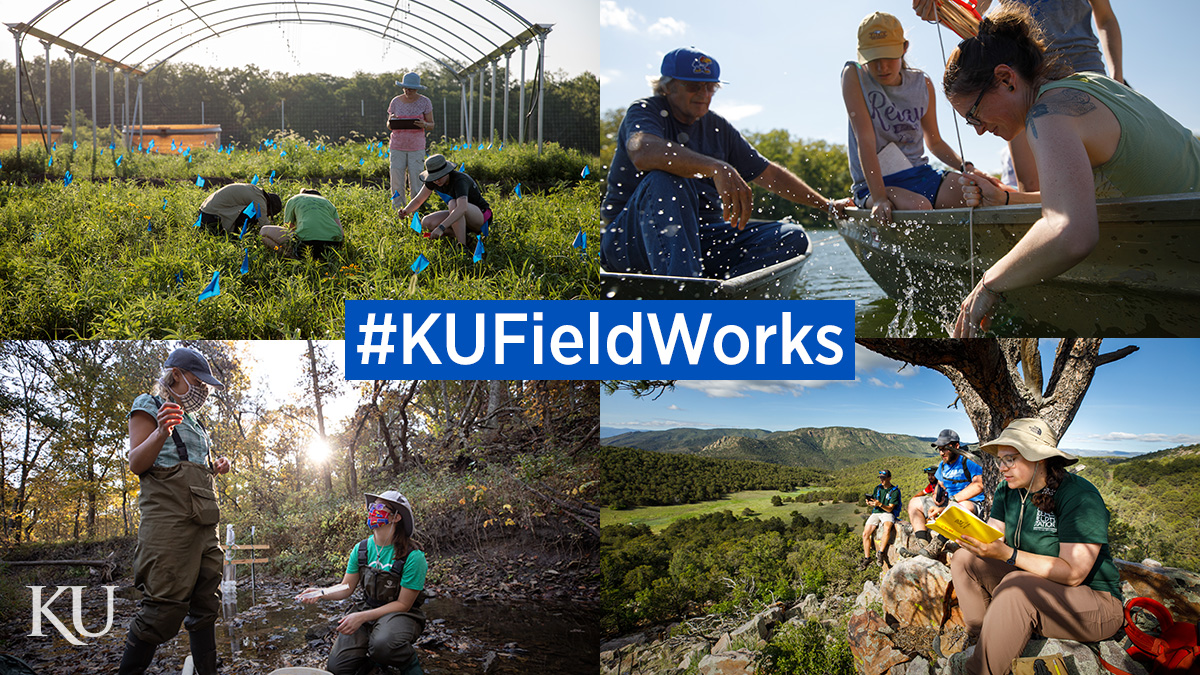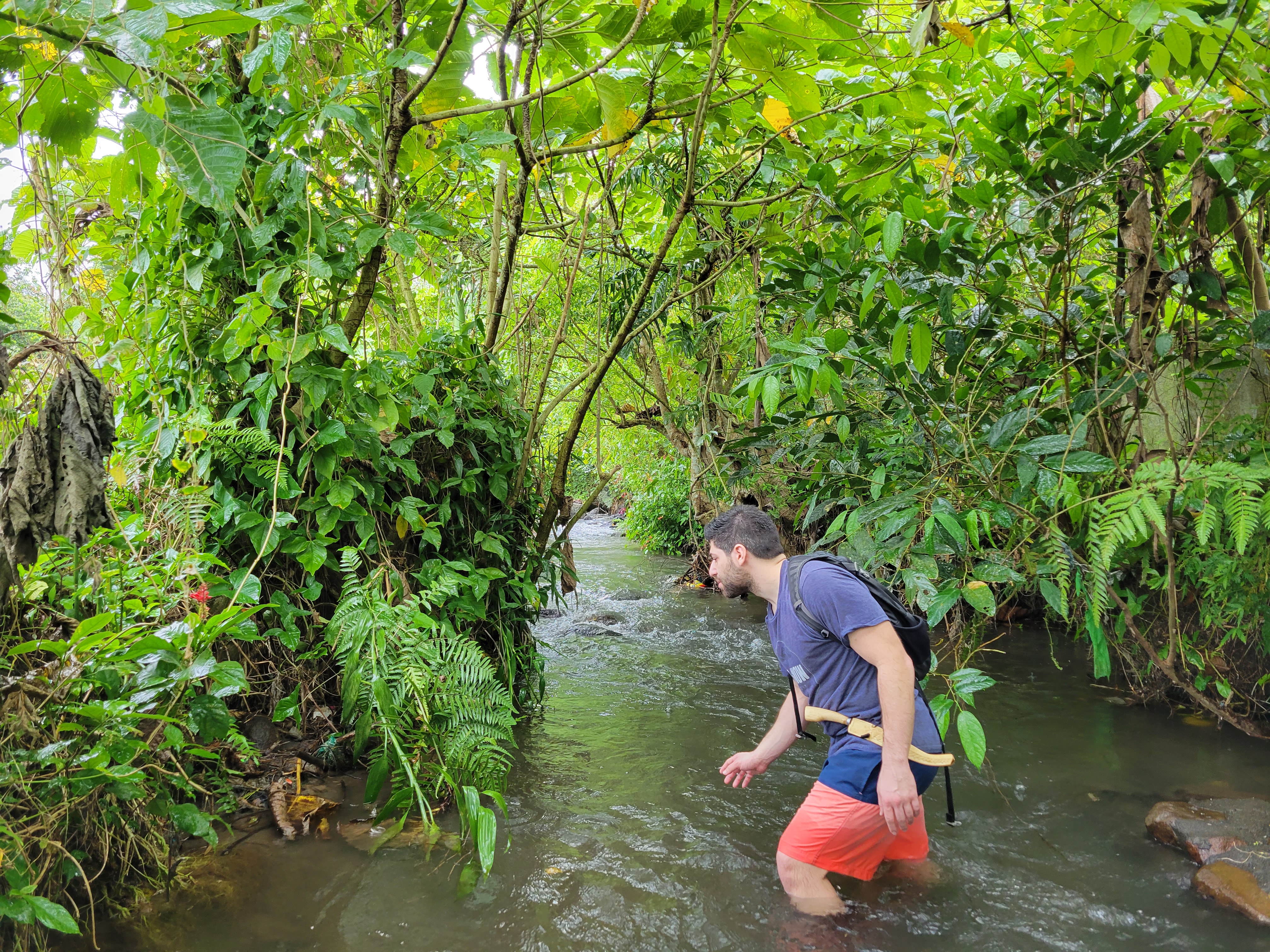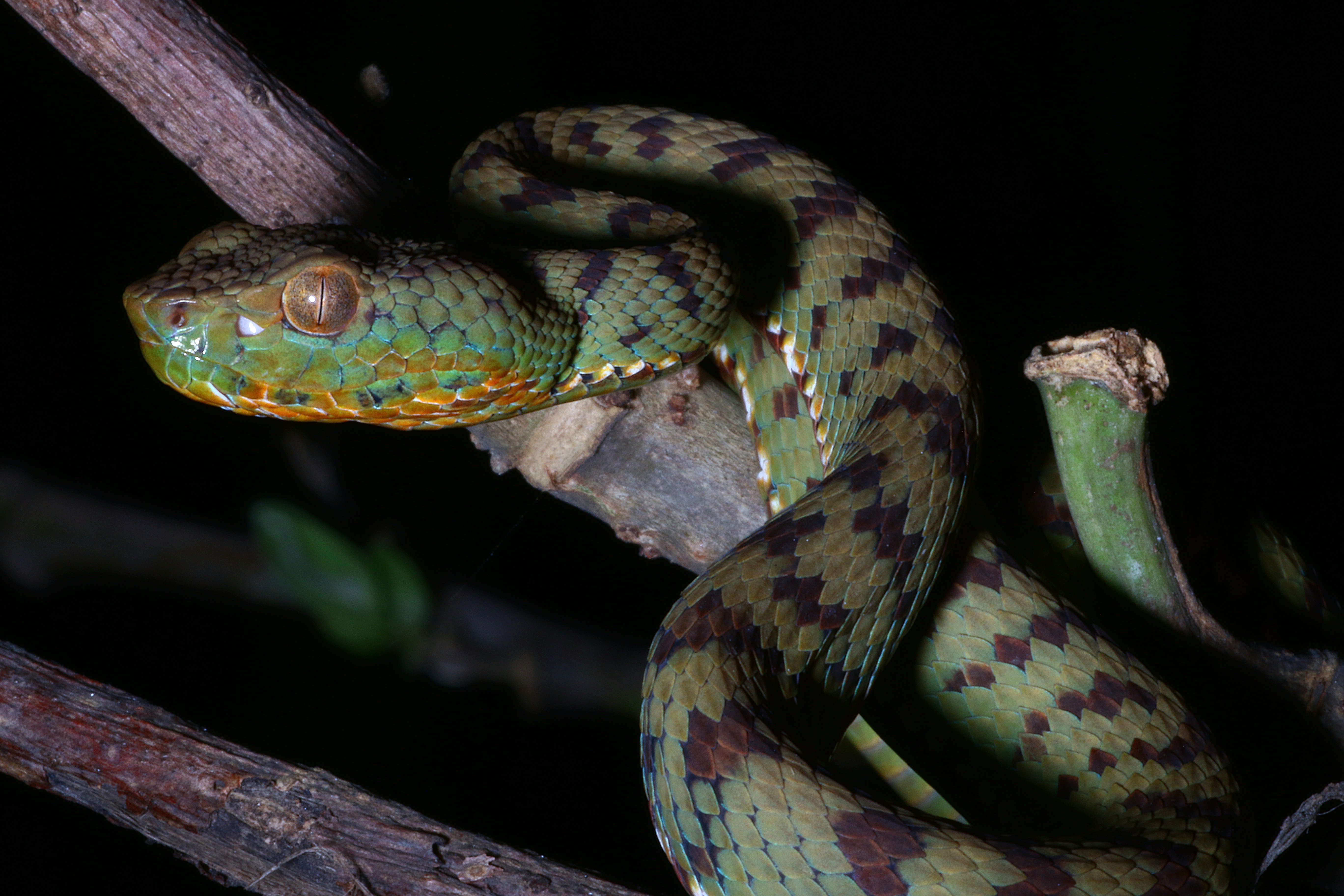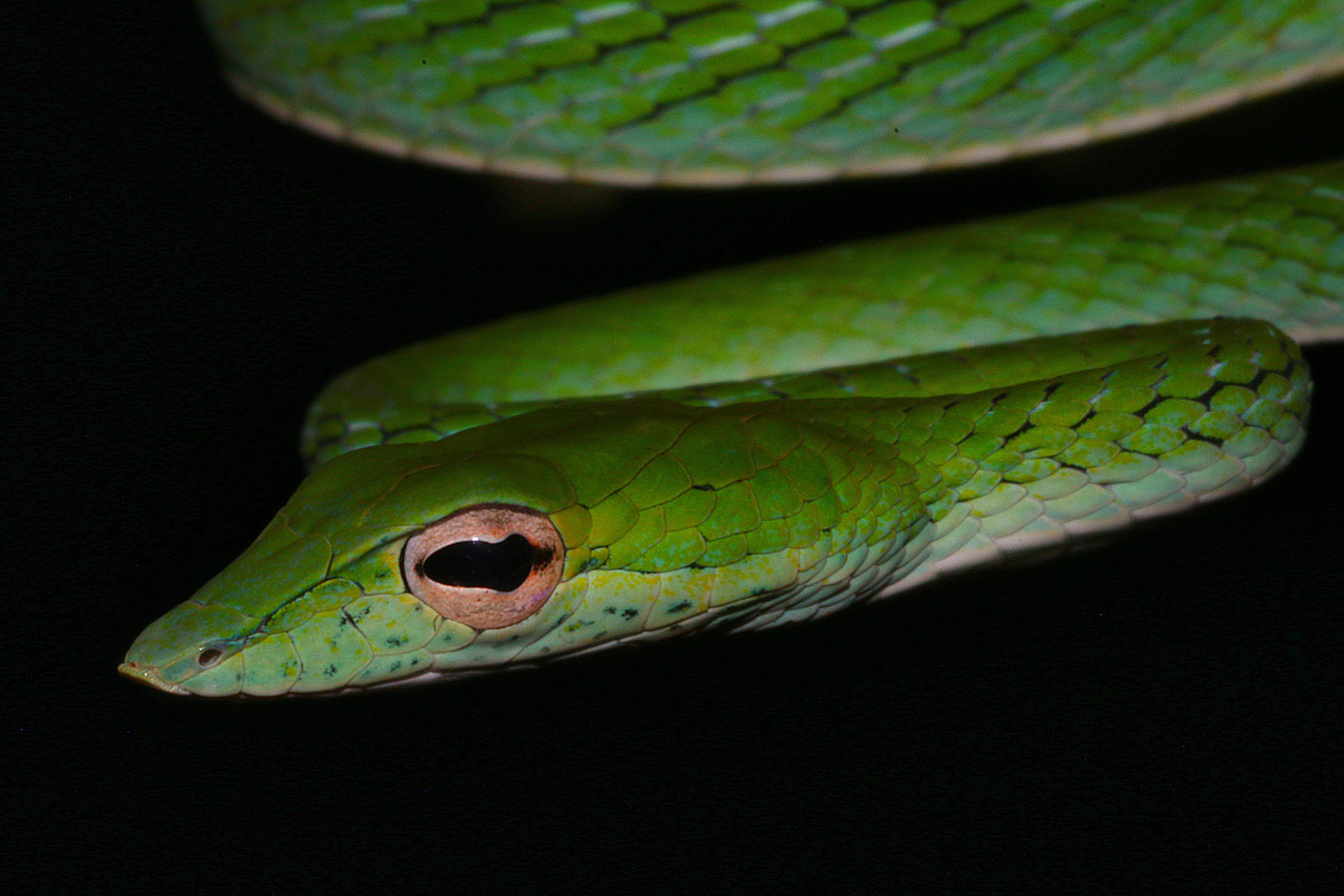#KUFieldWorks: Improving reptile conservation efforts

Editor’s note: Fieldwork provides invaluable insights about real-world environments and processes, expanding and reinforcing what researchers learn in classrooms, labs and collections. KU faculty, staff and students across a spectrum of disciplines are taking their inquiry directly to rivers, prairies, dig sites, glaciers, islands, burial grounds and more this summer. Through the #KUFieldWorks series, we'll join them on their adventures.
Q&A with postdoctoral fellow Justin Bernstein
LAWRENCE — Justin Bernstein, postdoctoral fellow at the KU Biodiversity Institute & Natural History Museum, has braved knee-deep mud, unpredictable weather and minor earthquakes in his quest to analyze snake biodiversity in the Philippines. His ultimate goal? Improving efforts to protect reptile and amphibian populations.
Bernstein and collaborators conducted fieldwork in the Philippines in 2019-2023.
What methods, approaches, experiments, etc. are you using?
My work is split into three parts. I perform lab-based “wet” work (extracting DNA from tissue and DNA sequencing), and computer-based work where I analyze the molecular data from the previous step. But before any of this happens, I use field-based collecting efforts to observe these animals in their natural habitats, learn more about their biology, and get tissue samples from the organisms I study: reptiles and amphibians, with a particular focus on snakes. In the field, we use “opportunistic searching,” in which we traverse through the habitats and search the areas we expect to find our study organisms in (rivers, lakes, mountains, beaches and human-disturbed areas). In recent field expeditions, we searched for species across mountains and low elevation areas to determine the differences in species richness across elevational gradients in the Philippines. In addition to this, I obtained snake samples from a species in the Philippines that inhabits coastal and inland water systems. This latter effort aims to see how river systems, which are typically thought of as barriers to population movement, can promote gene flow of populations and contribute to genetic diversity through migration and by mating with each other.

Why does your study matter to your field or for society?
The two projects mentioned above are important for identifying which species inhabit different parts of the Philippines, which harbors a large number reptiles and amphibians found nowhere else on the planet. Determining what biodiversity exists in the places we study is the first step in conserving species, and subsequent studies are then necessary to determine what geological and environmental factors contribute to the stability of populations and overall biodiversity. Our work contributes to the known Philippine biodiversity by increasing our knowledge of the distributions of known species, discovering species unknown to science (many new species have been discovered!), and understanding what habitats should be protected. This ultimately allows for us to better protect species, which are critical for preserving ecosystems, including the ones we rely on. Additionally, we can better understand how the landscape contributes to maintaining connectivity between populations, which fills in knowledge gaps of determining the evolutionary fate of populations — either remaining as a single species or diversifying into many species.
What do you enjoy most about being in the field?
The field is filled with extraordinary adventures. I get to find species that are extremely charismatic, rare, or ones that represent interesting examples from an evolutionary standpoint. I traverse captivating landscapes, which, while not always easy, is exciting, challenging and never short of fun. But the thing I enjoy most is the personal experiences along the way. I get to meet the most amazing of people, many of whom have become friends and family. Even the daily experiences with the general public are filled with smiles, laughter and memories. I learn to speak new languages, integrate into new cultures, eat new foods, and work with those who share similar passions in and outside of our research. It is this aspect of working together and expanding the experiences of my academic and non-academic self that is my favorite part of the field.

What are some memorable (funny, scary, surprising, etc.) moments from the field?
There are numerous stories that reach all corners of funny, scary, surprising and overwhelming. If I had to pick two moments, one would be from a 2023 trip to the Philippines. A collaborator and I went to an island in search of snakes, which requires us to do night surveys. To get to this island, it took eight hours of getting on a ferry, and then a two-hour motorcycle ride through rolling hills to get to the side of the island we needed to survey, and then finally a 30-minute boat ride to reach the secluded area. When we finally got there, we discovered that the forests were no longer accessible now, and our next boat off the island was days away. We performed a 30-minute day survey, mostly relying on a large bottle of water, some canned goods, and the generous hospitality of those who lived nearby. We got housed in a building rumored to be haunted, which kept the jokes flowing to keep our spirits up and ourselves entertained, as upon arriving we learned we had no cell signal, electricity or fresh water. This scenario was following a series of about 13 days of failing to find the study species we were looking for and changing our itinerary at least 10 times. Tired, overheated and finally in bed, I asked my colleague, “Well, nothing else unexpected can happen right?” I felt him kicking my bed and was wondering if he was feeling anxious until I remembered he was on the other side of the room. That minor earthquake that came immediately after I uttered that question was the icing on the cake that broke us into laughter in what was probably the most unexpected series of events we had encountered.
As a second, shorter moment, one memory I hold very dear is venturing to Lahos Island with my colleagues. We took a 20-minute boat ride to this 400 meter-long island of paradise at night. We set ourselves up on the small beach with dinner and waited under the full moon. It was not long before the sea kraits — black and blue striped snakes that swim in the ocean — beached themselves onto the sand. No lights exist in the immediate area, but the moon and plethora of stars nonetheless lit the island and waters. Sitting on the beach in the island breeze, listening to the waves crashing, enjoying food and conversation with those you care for, all while watching a spectacular show by nature of snakes emerging from the water, glistening in the moonlight, is a field memory I will never forget.
When is fieldwork frustrating, challenging or overwhelming?
As mentioned from my first story, the field can be unpredictable. One can consider themselves extremely lucky if all goes according to plan. The challenging part is it is not enough to have a Plan A and Plan B. At times, you need to have Plans A through F, maybe even more. And there have been moments where major decisions need to be made within minutes to hours. In addition to this, these changes of plans can derail the timeline of projects, the budget of the project, and sometimes the aims and goals of a scientific project. It can be a challenge to incorporate this type of planning in fieldwork, as you do not know when you will be turned away from a field site that was normally accessible, or there may be local events within 24 hours that might prevent work at field sites, issues with field-related paperwork, or you simply did not have success at finding the study organisms due to unknown and uncontrollable reasons. Often, I have found these situations to arise when I am already at my field sites on the other side of the world. While this can be overwhelming, one needs to maintain a clear line of thinking when these scenarios come up, understand it is part of the process, and identify what you can do to move forward with the science based on what you were able to accomplish despite the roadblocks along the way.

How does fieldwork complement the work you do elsewhere?
The ability to adapt to changing situations and making decisions, whether when leading a team or in a situation that only involves myself, has helped me go about my science outside of fieldwork in the same way. All of us who do science know we must plan ahead, but we cannot rely on our planning as a 100% guarantee. Being able to do this in the field and make calm and collected decisions has spread to all aspects of my life. Also, the public outreach and networking I do during fieldwork is quite extensive, giving oral presentations and having meetings with university presidents and deans, as well as barangay (small administrative districts) captains, municipal mayors, museum staff and others who live in the areas I visit. These interactions have greatly improved my networking and communication skills. It has helped me understand how to go about setting up collaborative and business meetings when I am not in the field, and I continue to learn more with every field expedition I am a part of.
I need to give a huge and special thank you (or "maraming salamat po" in Tagalog) to my collaborators here and in the Philippines who have made not just the science possible, but the overall experiences that I have discussed – Doc Michael Cuesta (Ateneo de Naga University – ADNU), Doc Michael Clores (Partido State University – Caramoan), Doc Marites Bonachita Sanguila (Father Saturnino Urios University), Mr. Joward Bautista (ADNU), and Dr. Rafe Brown (University of Kansas), and the many members of the offices and field teams they all work in.
First photo: University of Kansas researchers conduct fieldwork in prairies, rivers, streams and mountains. The #KUFieldWorks series follows researchers on their fieldwork adventures.
Second photo: Justin Bernstein wades through a river in the Philippines.
Third photo: A Philippine pit viper climbing a branch.
Fourth photo: Close up of an Asian vine snake.